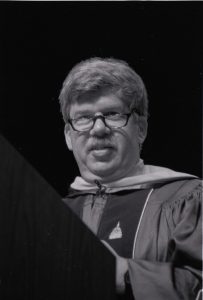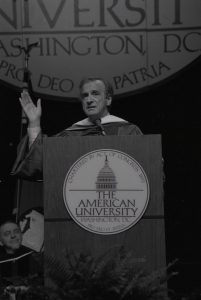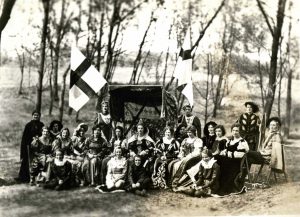It is with deep sadness, we recognize the passing of Herbert E. Striner, former Dean of the Kogod School of Business (1975-1981) and the College of Continuing Education (1969-1973).
Herb Striner earned his A.B. and M.A. degrees in economics from Rutgers University and his Ph.D in economics from Syracuse University. During World War II, he served in the China-Burma-India Theater of War as an infantry officer in the U.S. Army.
Striner worked for both the Federal Government and the private sector including the Brookings Institution, The Johns Hopkins University, the National Planning Association, the Stanford University Research Institute and the W.E. Upjohn Institute for Employment Research. He specialized in manpower and productivity problems and served as a productivity consultant to corporations as well as the U.S., Australian, Canadian and Italian governments including serving on the U.S. delegation to a NATO conference in Portugal on manpower policies in 1969. Striner published over 90 articles and 5 books.
An avid photographer and painter, Striner donated his collection of more than 8,000 negatives, prints, and slides to AU in 2007. His passion for photography began during World War II, when he was an infantry officer and was given his first camera. Striner said of this donation: “What I am most hoping for with this gift is that those whose interests in the history of the years spanned by the work, 1945–99, from whatever perspective—artistic or otherwise—will gain insights and a broadening of horizons that will contribute to their lives, as well as the lives of others.” Striner’s collection captures images ranging from international settings to local architecture to nature scenes, and is available online in our Digital Research Archive.














